Here on the Review, we have an annual tradition that we look forward to each January. We press pause, pour ourselves a big cup of coffee, and pore over each article we published the previous year, with an eye for the very best pieces of advice that we’re still thinking about, one year on.
Since the Review’s genesis in 2013, we’ve interviewed hundreds of folks who are among the very best at what they do — and 2020 was no exception. We cherish the opportunity to carefully parse through the advice of the experts that were featured on the Review’s digital pages — from repeat successful founders, to events gurus, to top psychologists. (If you’re curious to see how this collection has evolved over time, check out previous editions from 2019, 2018, 2017, 2016, 2015, 2014 and 2013.)
As we leafed through what we published in 2020, a few themes stood out to us. No 2020 retrospective would be complete without a nod to “these unprecedented times” (and we’ve given up combing the thesaurus for any language to replace this rote phrasing). Despite the whirlwind of changes and explosion in content since 2013 — from the rise of Substack newsletters, to the endless Twitter threads full of advice for entrepreneurs — our aim has remained consistent over the years. We seek not to chase trends or tackle specific industry verticals, but rather to publish enduring, evergreen company-building advice that both stands out from the crowd and can be put to use right away.
But this past year there was a pressing need to cover unexpected, timely topics where folks were clamoring for guidance. With our editorial plans upended, we quickly shifted gears. More importantly, founders, leaders and experts stepped forward, generously opening up their playbooks to offer wisdom that met the moment, from navigating the lightning-quick shift to virtual work, managing through turmoil, and adjusting your leadership mindset when it feels like you’re running on empty. You may have seen a lot written on these particular subjects across the internet, but as is always our goal, we hope the Review’s takes offered something a bit different.
2020 also brought the strength of pooling wisdom and leaning on community into sharp focus. No one person has all of the answers, and there’s power in bringing together plenty of different perspectives — some that you may agree with, and others that may not quite ring true for you. We tapped into that impulse more than ever this year, whether it was calling on a slew of recession-era investors and CEOs for their hard-won wisdom in the earliest days of the crisis, drawing on the experiences of over a dozen design leaders, or crowdsourcing the best tips on managing up and must-ask interview questions for candidates.
We even pushed ourselves out of our comfort zone of the written word and launched a brand-new podcast, In Depth, where we deliver the same signature interview style we’ve cultivated on the Review directly to your headphones.
We may not know what 2021 has in store, but as we reflect on the year that’s passed and what’s still to come, our sincere hope is that you continue to find a dose of inspiration, an actionable new tactic to try, or a compelling story to sink into whenever you turn your attention to the Review. We know the time you spend diving into an article or popping in your headphones is more precious than ever, and we continue to be sincerely grateful to all of you for spending it with us. Here are the 30 best pieces of advice from our articles last year — take them with you as we look towards brighter days to come.
1. Bookmark these 40 questions to ask interviewers on your next job hunt.
When it comes to interview advice, there’s plenty to go around for hiring managers. But for candidates, when the tables inevitably turn and the interviewer asks, “Do you have any questions for me?” it’s critical to not only stand out from the crowd, but also unearth some valuable information about whether this prospective company’s a good fit.
That’s why we published a follow-up to one of our most popular Review articles, sourcing ideas for questions candidates should ask from some of the sharpest folks we could find. Our aim? A robust roster of questions that go much deeper than “What’s the culture like?”
We’ll highlight a handful of our favorites below. Our advice? Narrow down your list of must-ask questions to the hiring panel by focusing on your deal-breakers — what would make you walk away?
- What are the top three customers that you’ve won, and the top three customers that you’ve lost? “You get a real sense of how the company is doing in the market, what's working well — and what's not,” says Max Branzburg, VP of Product at Coinbase.
- What’s something that would only happen here but wouldn’t at other organizations? “The culture of a workplace — an organization’s values, norms and practices — has a huge impact on our happiness and success,” says Adam Grant.
- What area of the business would you say this company is behind on, given its stage? “This question can often highlight functions that are not established and areas where you have to fill in cross-functionally that might surprise you,” says Cristina Cordova, Head of Platform and Partnerships at Notion.
- Can you tell me about your founding team’s background and why you’re tackling this particular problem? “More job candidates should think like an investor. After all, joining a company is one of the biggest investments one can make,” says Ryan Hoover, Founder of Product Hunt.
- How would your team describe you? “What’s your management style?” is an all-too-common question, more likely to elicit platitudes than nuggets of wisdom. “Framing it from the perspective of the reports prompts the manager to think beyond their intent and instead consider their actual working relationships with the team,” says Zainab Ghadiyali (alum of Airbnb and Facebook).
- Can I see your calendar for the week? “I believe there’s truth in calendars. If someone tells you in an interview that they really care about the learning, development and mentorship of their employees, their calendar should reflect that,” says Anna Binder, Head of People Operations at Asana.
2. Invest in your writing skills.
Upstart’s CEO Dave Girouard previously penned one of the Review’s most popular mandates, “Speed as a Habit,” and this past year he returned to our digital pages to shine a light on an under-utilized mechanism in your founder’s toolkit: effective writing.
Words matter. At minimum, they shape the impression you make on others — often the first impression.
He’s got plenty of tactics for shaping up your writing, including one particularly simple one — eliminate all unnecessary words. “Words fight for your reader’s scarce attention. Thus, every unnecessary word detracts from the important ones,” says Girouard. As a first step, consider these tips for messages that pack a punch:
- Turf the egregious filler words: very, rather, little, indeed, somewhat, really, kind of. These nutrition-free calories of the mind either cushion your weakly-held beliefs or lamely pretend to quantify something you’ve failed to quantify.
- As a general rule, if you can’t identify what part of speech a word is, best not to use it.
- You can leave out “I think” — your reader appreciates that you necessarily thought of this gem before typing it.

3. Reflect on WWYRD — What Would Your Replacement Do?
The Upstart team started in 2012 with three co-founders who barely knew each other, was forced to make a company-saving pivot early on, and largely flew under the radar in Silicon Valley for the past 8 years — but at the tail end of 2020, this once-scrappy startup achieved the coveted IPO milestone. For our last story of the year, we were fortunate to have CEO and co-founder Dave Girouard once again stop by our virtual Review office — this time to sketch out the tale of how Upstart got built, detailing the bumpy starts, lucky breaks and lessons learned along the journey to going public. We covered everything from the founding idea and the fast pivot, to why he “sucked at fundraising” and how he built out his exec team. One standout area, however, was Girouard’s musings on management and leveling up as a leader.

When starting Upstart, Girouard made the leap from exec at Google to first-time founder and CEO. Over the years, he’s come to rely on a set of internal exercises to push his thinking and grow as a leader. “Sometimes you just need little mental models in your head to manage your own psychology as CEO,” he says.
Here’s one of his go-tos: “One mental exercise I've invested in is thinking about what would happen if tomorrow my board got together and fired me," says Girouard. "What if they said, 'Dave, thank you for playing. You're done. We are recruiting a new CEO for Upstart.' And they went out and found the very best CEO in the world, one who would just make me look like a fool. And if they bring her in and she starts at Upstart — what would she do differently than what I'm doing? I think about that for a while, and then I tell myself, 'Why the hell aren't you doing those things?' It's just this weird game I play to get myself to recognize that while I'm doing some things okay, I can be lulled into a place of feeling good about myself when I'm probably not doing some other things very well."
I think every thoughtful leader can do their best to manage themselves first. If you really try to bring out the best in yourself, you'll realize that there's always an alternative approach to any situation.
4. Pick the right growth lane — and don’t let up on the gas.
Lenny Rachitsky should be a familiar face. In addition to putting together an incredible newsletter, in recent years this former product lead and head of consumer supply growth at Airbnb has contributed wisdom on performance reviews and annual planning right here on the Review. This year, he teamed up with Dan Hockenmaier (founder of growth strategy firm Basis One and former director of growth marketing at Thumbtack) to put together a highly-detailed growth framework for consumer founders.
Their advice in a nutshell? It’s not as simple as just “adding some SEO” or “making your product more viral.” There are actually very few routes to scalable new customer acquisition, and startups often try too many channels at once — and, as a result, don’t invest in any one channel enough. Instead, focus on one of these growth lanes: content, virality, or performance marketing. To combat the common mistakes of making this choice in a haphazard way, or betting on the wrong lane, Hockenmaier and Rachitsky advise following this three-step process: validate, commit, and scale.
This visual representation of their framework below comes in handy — as do their case studies on how Thumbtack, Airbnb and Booking.com used these channels to acquire customers in the early days.
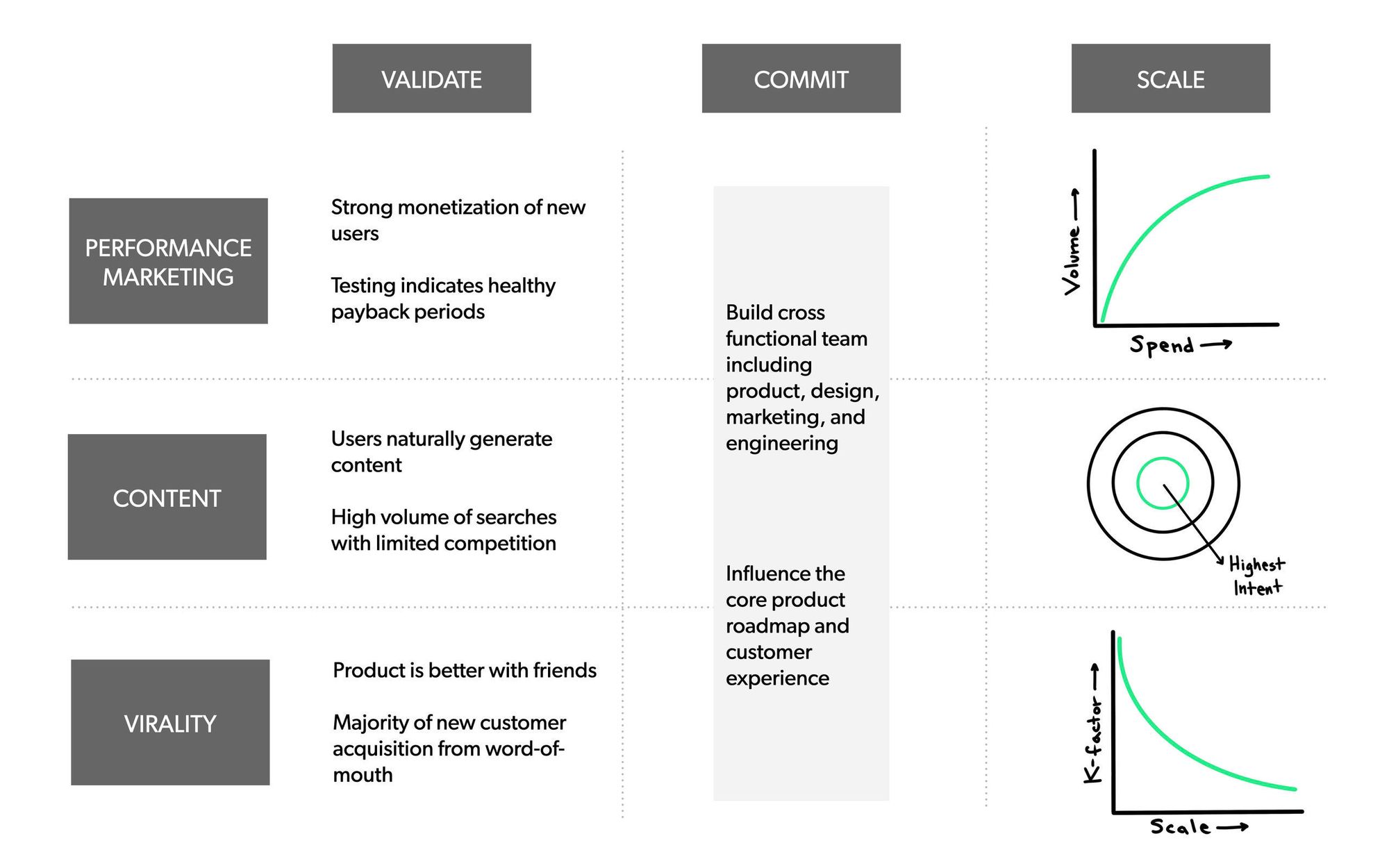
5. Focus on managing the what, not the how.
“Generally speaking, high-performing teams are made up of humans who are able to independently meet a goal. It’s just a huge amount of wasted energy to try to create robots out of humans,” says Molly Graham (of “give away your legos” and “befriend the monster chewing on your leg” fame).

Intelligent machine analogies aside, here’s how the COO of Lambda School typically sees this dynamic play out in organizations: “You often see people trying to direct their team in terms of exactly how they would have done it. I see so many managers getting really bogged down in the literal process that someone is going through in order to achieve a goal. But at the end of the day, there’s only one thing that matters: Did they achieve the goal?” she says.
“To get out of that mindset, I push people to focus on, ‘What is this person responsible for?’ not, ‘How are they doing it?’ As company leader, you can give feedback on the ‘how,’ particularly if it’s potentially destructive to the people around them or problematic in terms of draining too many resources. But goals and expectations have to be set around the what,” says Graham.
The best managers set expectations at the “what” level, not the “how” level.
6. Understand your customers with this lightweight JTBD framework.
Do you find your team is unable to align on what matters most about your product as you’re starting out? Or that you’ve worked hard to bring something to market, but you’re not getting traction with users? In her work as a Product Lead for Facebook’s New Product Experimentation team, as well as a startup advisor and Angel investor, Sunita Mohanty has seen plenty of founders, early-stage teams and even later-stage product orgs run into these problems time and time again. “Intuition and conviction are extremely important in building early-stage products, but pairing it with listening to users can increase your chances of being right,” she says.
Anyone can build products. Not everyone can build products that solve a real problem and land product-market fit.
To avoid this trap, Mohanty relies on the JTBD (jobs-to-be-done) framework. The idea behind it, according to Clayton Christensen’s approach, is: “People don’t simply buy products or services, they ‘hire’ them to make progress in specific circumstances.”
Start by crafting a clear, standout JTBD statement. “When crafted well, these statements create clarity around what doesn’t exist today and what product builders can focus on to innovate,” says Mohanty. To put that into practice, here’s a JBTD statement template that she commonly uses within her product teams:
- When I….. (context)
- But….. (barrier)
- Help me….. (goal)
- So I….. (outcome)
To see JTBD in action, Mohanty helpfully shares an example from a product that’s become a must-have for many in 2020.
Peloton JTBD: When I need an option to workout, but I can’t go to my favorite studio, help me to get a convenient and inspiring indoor workout, so I can feel my best for myself and my family.
When it comes to prioritizing what’s often a jam-packed list of customer “jobs” your product could tackle, Mohanty leans on this framework to uncover the largest gaps that need to be filled:
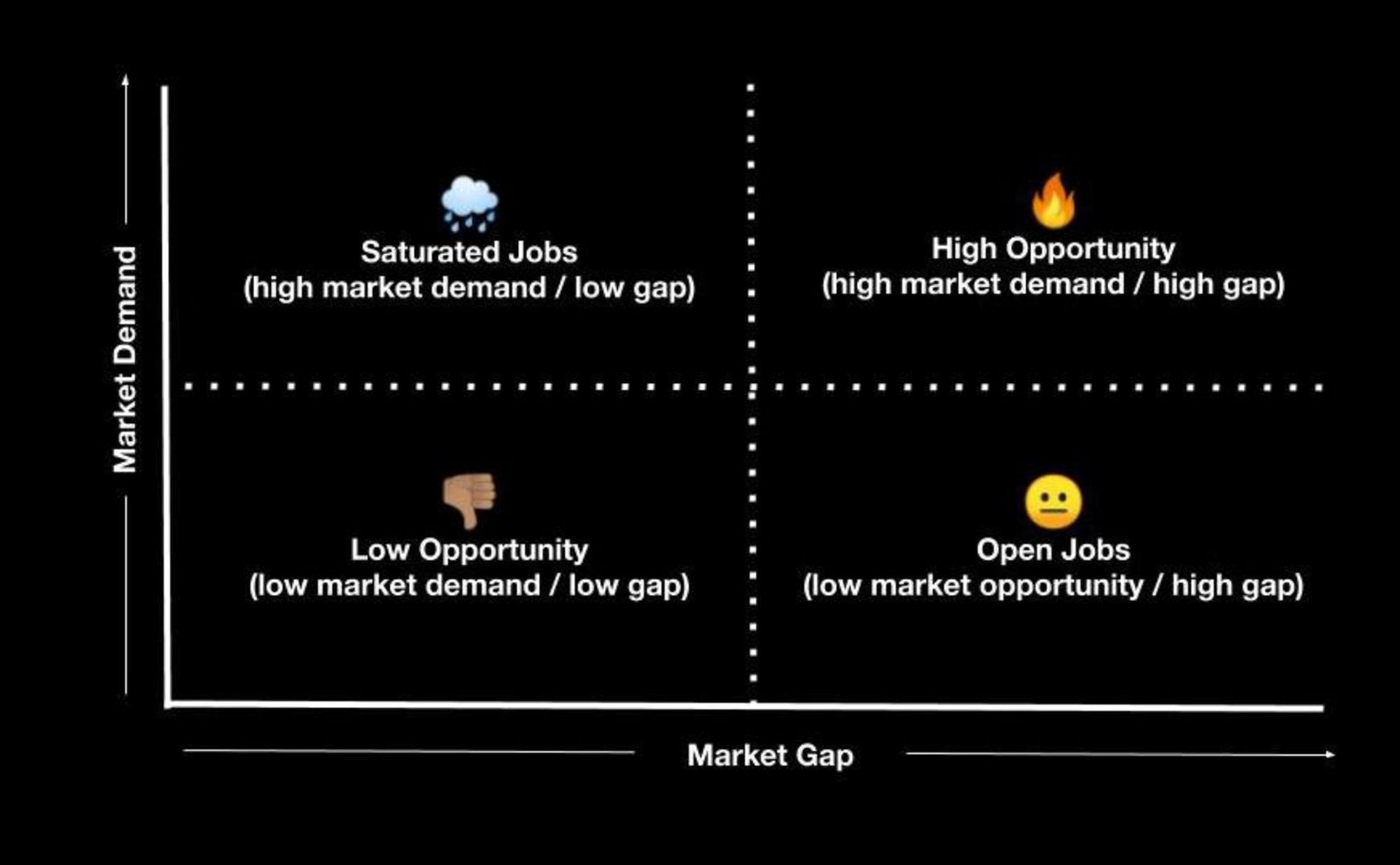
7. Don’t just default to growing by adding more engineers.
In her time as a top engineering leader at Facebook and Stripe, one growth trap Raylene Yung’s seen plenty of company-builders fall into is relying too much on team expansion. “It’s easy to get on the treadmill and only think about growth and headcount,” she says. “But while adding more people might give you the illusion of progress, it could be papering over real issues and making them harder to solve.”
Adding more headcount isn’t always the cure. It often creates more problems than it solves.
To move beyond increasing headcount, Yung recommends asking these questions to get more out of your team:
- Why does my team exist, and why does what we work on matter? “Talk about your long-term goals and objectives, rather than only the projects on your plate today. Help your team think further ahead, and invite them to suggest different paths to your goals, or debate whether they are the right ones,” says Yung. “If you can’t explain why your goals and projects matter, maybe you’re working on the wrong things.”
- How can I help my teammates grow, across all experience levels and scenarios? The telltale sign of a less experienced manager is when they’re great for new grads, but rarely have the most senior members on their team — often due to a mutual unwillingness to manage or be managed by them. Yung’s advice? Instead of trying to work around the problem, tackle it head on. “One of my first team members had been working for twelve more years than I had — I was intimidated, but decided to try and learn from the experience,” she says. “I shared areas I thought I could help him with (e.g. product domain knowledge, company context), and asked for his help in others (e.g. managing senior engineers, scaling complex systems). Over the next few years, we developed a strong working relationship and learned a lot from one another.”
8. Tap into the right market and pressure test your startup idea with this framework.
Last year, the First Round team welcomed Todd Jackson to the fold as our newest partner. He’s since successfully made the transition from operator to investor, forging partnerships with incredible companies like Steno. Jackson has a deep bench of recent, in-the-trenches experiences to draw from when coaching founders in the earliest stages of company building, from shaping Gmail’s user interface and tinkering with Facebook’s Newsfeed, to building Dropbox’s bottom-up revenue engine and founding a successful startup that was scooped up by Twitter.

Here’s the piece of advice he most often shares with aspiring founders: “Aside from choosing your co-founder, identifying the right market to go after is the single most important decision a founder makes, and it’s one too many get wrong,” says Jackson. “If you don't go through an exercise, you’re in danger of developing a nice-to-have product, not a must-have product — which puts product/market fit further out of reach.”
Here’s a quick look at the framework he relied on in his founder days and now shares with every future founder he meets. Jackson also shares some examples from Instagram, Glide (which allows you to create an app from a Google Sheet in minutes), and his own startup Cover (an Android lockscreen replacement) to flesh out his framework.
- Functional needs: Does it address a clear functional need that users have? This is often why they’ll try it. “For Glide, there’s the functional need of creating great apps and mobile experiences more easily. For Cover, functionally, we gave Android users a simple way to organize their apps, and replaced the clunky Gingerbread stock UI to make their lockscreen sleeker and smarter.”
- Emotional needs: Does it address an emotional need that users have? This is often why they’ll tell others about it, unlocking that viral word-of-mouth growth loop that’s so critical. “This can be tricky,” says Jackson. “Your customers generally can't or won't name it themselves. You have to probe on what they feel and translate what they’re saying into a product.” With his own startup, Cover, this was key: “A lot of what I heard is that they wished they could upgrade their phone to something better — without paying more for a new phone. And by specifically building for Android users, we tapped into their emotional needs. They often felt like second-class citizens,” he says.
- Billion-plus market: Is it in a large, underserved market? Or in a market that can become large? This impacts everything from your ability to fundraise to who may be interested in acquiring you. “With my own startup, Cover, Android was a monstrous market, but it was also massively underserved,” says Jackson. “As for Glide, we’ve seen from examples like Webflow that no-code products have a potentially huge market behind them.”
- Breakthrough UX: Is there something novel or unique about the user experience? Does it feel a little like magic when you use it? This last one isn’t strictly necessary, but it’s very helpful, and a lot of successful products had it when they launched. “Instagram’s one-tap filters UI made Photoshop-esque editing accessible and easy. For Glide the breakthrough UX is the spreadsheet to app process — it truly feels like magic in action.”
If you think of ideas that simultaneously meet people's functional needs and emotional needs, while sitting in a big market and making use of a breakthrough user interface, that’s a recipe for a really good company.
9. Give equal airtime in meetings.
Creating space in meetings for every person to share their ideas is critical to establishing an inclusive team environment — and this doesn’t happen by accident. The team at LifeLabs Learning has plenty of tips for leaders to be deliberate here.
“Extroverted folks, those who've been on the team the longest, and members of dominant identity groups often get their perspectives heard more than others. Leaders need to pay attention to these dynamics,” says Dr. Vaneeta Sandhu (since we published this article with LifeLabs, she’s gone on to join the team at Coa).
To get more tactical, Sandhu offers some tools that are helpful:
- Create thinking time. “That could be as simple as saying, ‘Before we all answer, let's all jot down our thoughts.’ That's great for people who are operating in their non-native language, for introverts, or for those who are neurodivergent.”
- Round-robin. “Another effective tool is a forced turn-taking mechanism, where you say, ‘We're all going to go around and share a question or an answer for two minutes each. Feel free to say pass.’ There's a lot of research, for example, in the surgical world, that shows if surgical teams start with a round-robin, nurses are much more likely to speak up in the midst of surgery and potentially give lifesaving, critical feedback.”
- Ritual questions. “Make a habit of ending key points in a meeting with questions such as, ‘Who haven’t we heard from yet?’ and ‘What are two additional perspectives we haven’t considered?’
- Circle back. While preventing interruptions in the midst of an engaged conversation — especially a virtual one — can be counterproductive, one thing leaders can do is track completion. “If someone is talked over, go back to them and say, ‘Hey, did you want to finish your thought?’ or ‘I’d love to hear the rest of their point before we move on.’”
It’s not enough to make sure everyone has a seat at the table — inclusive leaders make sure everyone gets airtime, too.
10. Solicit impactful feedback with scaling questions.

Another tip from the LifeLabs crew, since they had so much practical wisdom to share on becoming more inclusive leaders — a topic that was rightly top-of-mind in 2020. “As leaders, we tend to ask very broad feedback questions like ‘How are things?’ You need to follow this up with getting very, very specific. Specificity will allow us to pinpoint exactly where an issue of exclusion might be and understand how we can remedy it,” says Massella Dukuly of LifeLabs Learning.
“A tactical practice I love from LifeLabs is what we call the scaling question. A quick example is: ‘On a scale of one to 10, how well do you think I facilitated that meeting? Most of the time, you’ll usually hear seven or eight, because they're uncomfortable saying anything beyond that,” Dukuly says.
“That’s why the second question is magic: What would it take to increase that score by one point? Then maybe I’ll hear something like, ‘You could have called on people more to include other voices.’ This is important for two reasons. One, giving people greater safety to be able to express themselves increases engagement and commitment. Two, it also gives us micro steps we can then act on to build trust and improve inclusion.”
Scaling questions have the power to turn abstract ideas into measurable, actionable feedback. The impact happens through the smallness of the second question.
11. Lean on these prompts in your next 1:1 meeting.
With calendars bursting at the seams with Zoom meetings — and no more casual chats in the office kitchen while making a cup of coffee — regular 1:1 check-ins with your reports became even more critical this past year. Not only to parse through rapidly-shifting priorities and scrapped plans, but as an opportunity to touch-base with how folks are doing emotionally and where they may need your support. When done well, 1:1s aren’t rote rituals where you exchange status updates, wade into the waters of small talk and stick to the shores of safe conversation so you can move on with your day.
To make sure this standing meeting packs a punch every time, we combed the Review archives for the best tactical ideas we could find on taking your 1:1 meetings to the next level. Plenty of the tips honed in on specific questions managers should reflect on or ask their reports — with the idea that the very best managers consider the mindset they want to bring to each 1:1, including the thoughtful questions to posit, the dynamic to cultivate with each direct report, and how to tailor these sessions to their unique needs.
Here’s a few of the highlights. To view the full slate of questions we pooled, check out the question bank.
Self Reflection:
- What did my report do well this past week? What do they need to work on? (Keep a running list that will come in handy during performance review season).
- Do my reports regularly bring their biggest challenges to my attention?
Identify some topics:
- What’s the best use of our time today?
- Last time we spoke you said X was challenging for you, how’s that going?
Understand the issues:
- What does your ideal outcome look like?
- What’s the worst-case scenario you’re worried about?
Develop long-term goals:
- What is the area that, if you made an improvement, would give you the greatest return?
- Who in the company would you be excited to shadow/learn from?
Deliver better support:
- What can I help with between now and the next time we meet?
- How do you feel about the amount of feedback you’re getting?
12. Take your virtual events to the next level with tactics from this crash course in online community building.
Whether it was looking for creative ways to get in front of customers, or simply trying to hold a virtual team happy hour, leaders had to figure out online events, fast, this year — and community expert David Spinks was the perfect person to consult. After spending over a decade deepening the moat of community as the founder of CMX and VP of Community at Bevy, he’s full of wisdom on building communities that spark magic but still make an impact on the bottom line. (We can’t wait to get our hands on a copy of his forthcoming book.)
In our interview earlier this year, Spinks shared an armful of tactics to help startup leaders struggling to refine their virtual event and community-building strategies. His main directive? Don't try to copy in-person. You can't. “Instead, go back to first principles of why you organized the in-person events. Ask yourself: What problem are you solving? How are virtual tools uniquely positioned to provide that value? Think about the things you can do at scale online, that you couldn’t do in an offline event,” says Spinks.
Spinks offered up tons of pointers for making virtual discussions more valuable, and we’ll highlight a few here:
- Stay under 10 and over 30. Keep the “small” in small group discussion. Stick to 8 or fewer people and extend the conversation to 60-90 minutes so you have the room to dig deeper.
- Kick off with a bang. Start with short 1:1 video chats, so attendees can meet each other beforehand, using tools such as Icebreaker.video. Kick off the group session with a round of intros around a question to spark conversation and get everyone involved. “You can find a ton of examples and advice on choosing the right question from Rachel Ben Hamou,” says Spinks. Range’s Icebreaker tool also offers tons of options.
- End on commitment and next steps: Finish by asking each participant to share one commitment or next action they will make as a result of the discussion.
13. Get a handle on anxiety by trusting your future self.
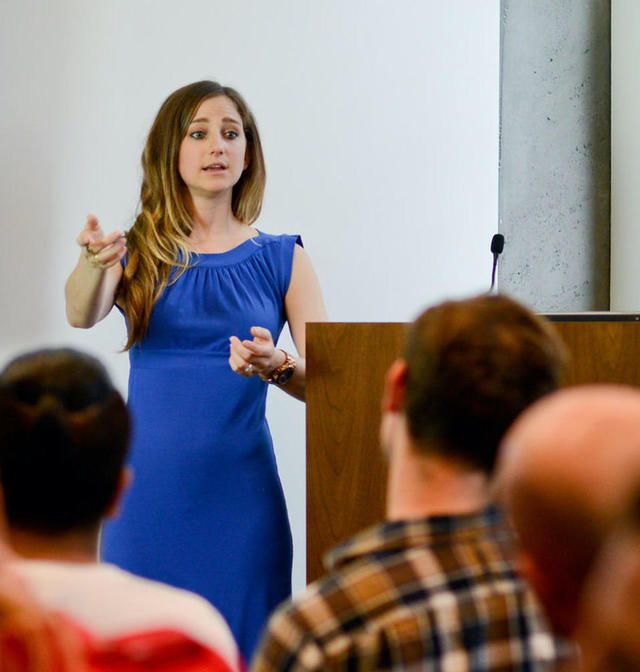
Strong companies take shape when emotionally fit founders are sitting at the top, says Dr. Emily Anhalt. She should know — Anhalt’s a psychologist who has worked with founders in Silicon Valley for more than a decade, and she’s a company builder herself, as the co-founder and Chief Clinical Officer of Coa, a mental fitness community that offers therapist-led group classes and therapist matchmaking services.
In our interview this year, Anhalt broke down her signature concept of emotional fitness into seven traits, serving up practical tips for building muscle in each area. While every trait is important, self-awareness always snags top-billing. “As a founder, it's extra important to take care of yourself and process anxiety, frustration and other feelings so that they don’t leak into the business and onto employees,” she says.
Here’s one of Anhalt’s tactics for doing just that: Block off a “worry hour” on your calendar. “It sounds a little trite, but it allows you to be more present for the rest of your day, rather than feeling constantly overwhelmed by tides of anxiety, which ripple out to impact how you interact with others,” says Anhalt. This technique helps manage what she calls “anticipatory trauma” — something she saw a lot of in this tumultuous year. “Anxiety makes us feel like we are going to be able to handle a tough thing if it happens. But when there’s so much uncertainty, we have no ability to know what will happen. It sends people into a tailspin that’s not really useful,” Anhalt says. “It's your job to handle the emotions that are true right now. Trust your future self — the version of you that is better equipped than your present self with greater experience and wisdom to solve problems. A quote I love that captures this idea is, ‘You can only see as far as your headlights, but you can still make the whole trip that way.’”
You often make the mistake of allowing yourself to slip into tomorrow’s worries instead of handling the challenges of the moment. You’re suffering future pain, needlessly.
14. Tasked with hiring your own boss? Use these interview questions.
This past year, we held our inaugural Founding Designer Track, where the earliest designers at Facebook, Asana, Dropbox, Lattice, and other startups served as experts and mentors to those considering joining a startup as the first design hire. As this program wrapped, we compiled the best insights from these seasoned design leaders on all the peaks and valleys that come with building design from the bottom up.
One gem that stood out came from Katie Witkop, the founding designer at Faire. When her CEO mentioned they needed a Head of Design to build out a 100-person team, Witkop was faced with a choice: to try and stretch into that role, or to kick off the hiring search for a leader to layer above her. She opted for the latter.
Most founding designers dream of owning their organization, leading through title and management — and originally I was no exception. But ultimately finding and recruiting my boss has been one of the things I’m most proud of, because I designed a business that could grow beyond its founding members.
Even if you’re not in the design function, you can borrow and adjust these questions from Witkop’s interviewing playbook when you find yourself sitting on the hiring panel for your future boss:
- What did you enjoy most about your last role in design leadership?
- How do you see the role as Head of Design for our company? What areas are you most excited about? What areas do you see as opportunities for growth or improvement?
- Where do you [interviewee] see my [interviewer] role evolving in the next six months to a year?
- What qualities do you look for in people on your team?
- Have you ever experienced a bad report? How did you handle the situation?
- Would you have done anything differently in your past leadership roles? If so, what?
15. Put on a black hat to go faster and find the unknowns.

Before founding Mutiny, Jaleh Rezaei served as Gusto's first marketing hire and later Head of Marketing. In her experience, she’s found that marketers often obsess over the latest tactics or must-use channels, overlooking what she believes is the most critical ingredient: speed. “Some marketing strategies sound brilliant on paper, but when you get into the execution, you realize that many assumptions were incorrect. Focus your team’s energy on nurturing the seeds that have the most promise — and quickly divesting from the ones that don’t,” Rezaei says.
This year, she unpacked her six-step framework for doing just that. The first step is all about poking holes in those assumptions to identify the potholes that will slow programs down. “When I’ve needed to pull the plug on a program, it usually comes down to having the wrong assumptions about the customer’s desires and capabilities,” says Rezaei. “We want them to be one way, and it would be really convenient for us if they were good at X, but they’re not. Maybe they have less time than we thought they did, or we’re less important to them than we thought.”
To flag these failure points early on, Rezaei uses what’s called the “black hat" technique, which centers around asking one question: Let’s assume that it’s one year from now and we’ve failed at our goal. What went wrong? After gathering a list of five to 10 major possibilities, flip these negative statements into positive ones and reframe them as the key levers, the things that must be true for the program to work. See her example below:
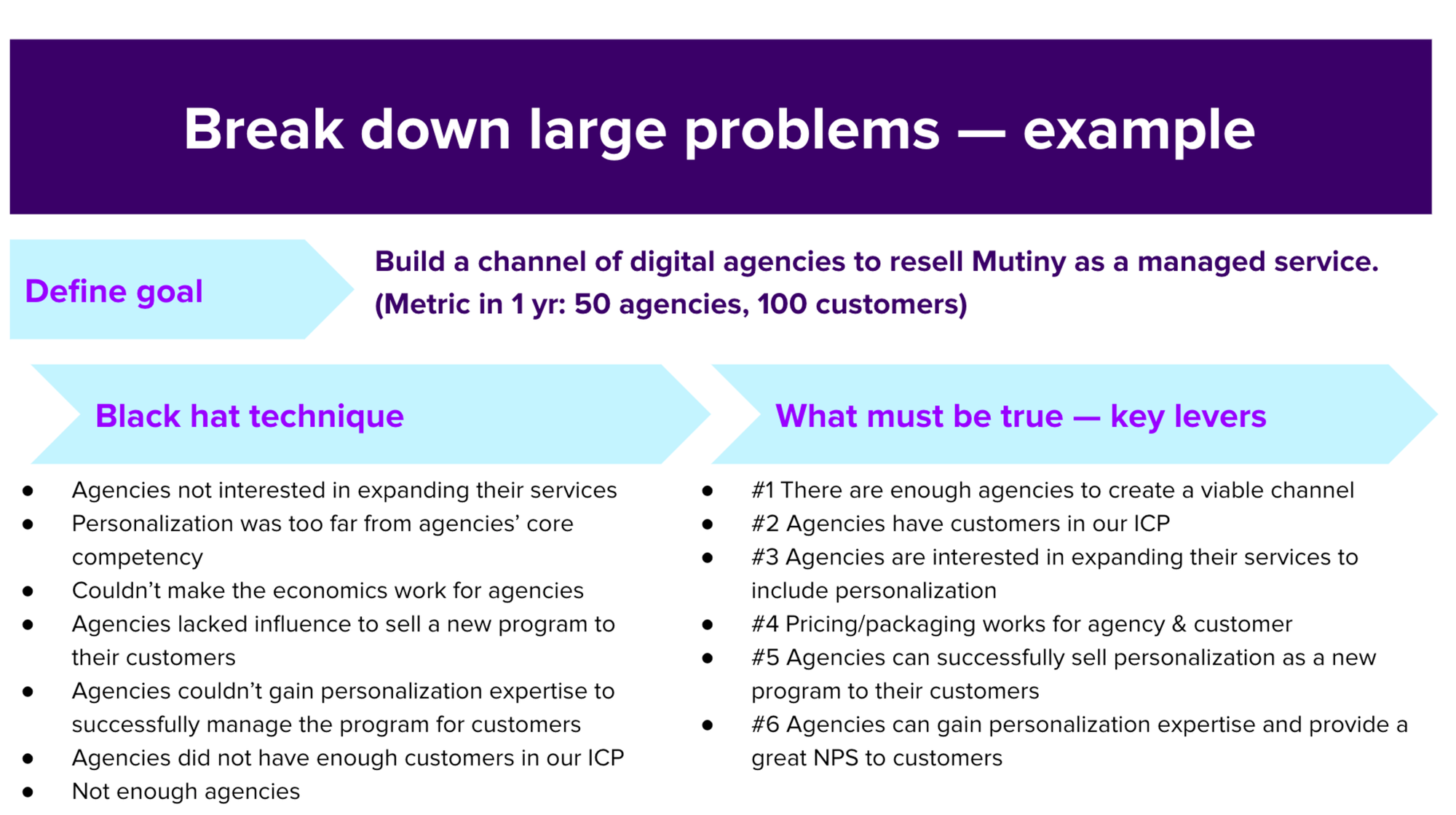
16. Drive product excitement by focusing on what’s tedious.
There are certain success stories in tech that don't get enough attention. Square's Cash App is one of them, which is why we were grateful for the chance to chat with Ayo Omojola this year. Before taking on his current role as VP of Product at Carbon Health, Omojola was the founding PM on the banking team for Cash App and the co-creator of the popular Cash Card. In our interview, we dug into why it worked, as well as his tips for building products in heavily-regulated industries.
“It’s important to not be afraid to go to whatever depth necessary to get an answer that you really understand,” says Omojola. Here’s an example: “We spent an insane amount of time and effort optimizing for the look of the card. I spent probably a few weeks in combined hours at factories. We literally tried 200 different combinations of thickness, power settings, et cetera, to get to the thing that we eventually shipped. The easiest thing to do would have been to send an email to someone and say, ‘Make the card look like this.’ The hardest thing to do was to actually understand all of the toggles.”
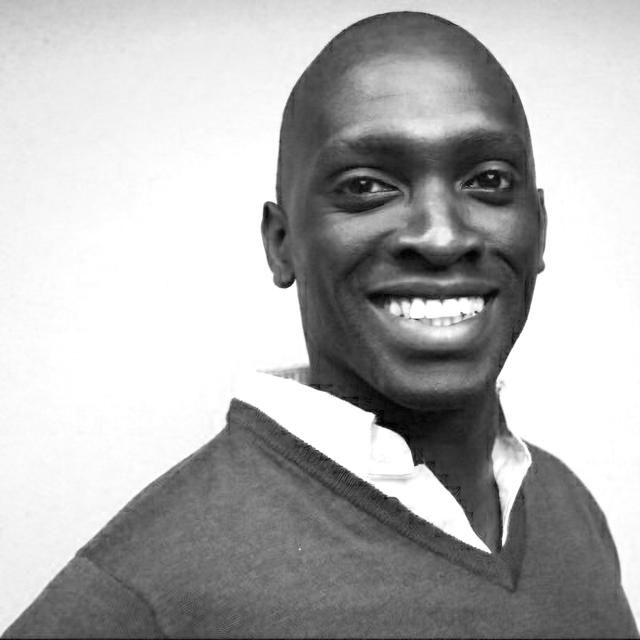
Here’s why that was an advantage: “When we were first working on the Cash Card, the state of the art in the market was not really impressive. Physical cards hadn’t really been played with in a really long time. That left an opportunity,” he says. “Our underlying objective was to create a personalized physical card that people were proud to take out of their wallet and show their friends. We wanted to put the customer’s brand first, as an alternative to a prepaid card off the shelf which the brand has slapped their logo all over,” he says. “How can you make something sufficiently more useful than the state of the art so that it cuts through the clutter, and the people who you’re trying to make stuff for actually pay attention?”
The persistence to go the extra mile paid off. “We ended up with a Cash Card product that thousands of people were excited to share on Twitter. Those were free impressions that we didn’t have to pay for that drove viral growth,” he says.
Always look for those opportunities where it’s easy to stop, where it gets tedious. That typically is a signal that somebody or a bunch of people just haven’t gotten deeper before.
17. Don’t hire someone who checks all the boxes.
There are many sugar-coated stories of entrepreneurship. Steve El-Hage’s isn’t one of them. He’s quick to tell you how Drop was earning $50K in revenue by week three, but then dropped to zero for eight consecutive after closing a seed round. Or how he neglected a serious case of burnout, and how his biggest problem was that he “didn’t know anything” when he dropped out of school to start a company at age 22.
As El-Hage candidly shared his biggest lessons as a first-time founder, we were particularly struck by how he approached hiring. For starters, he and his co-founders did an astonishing 80-90 interviews a day when they were getting started. But his biggest challenges came on the executive hiring front.
“I was just assessing overall competence and overall experience. I dinged candidates too much for being bad at what I assumed was a core competency of a senior leader, instead of focusing on exactly what the team needed from a skillset and a leadership perspective, and then interviewing against those things,” he says. As an example, El-Hage points to his struggles hiring a finance leader. His first hire was more process and controls-focused, which slowed down a team used to moving fast. After parting ways and running the finance team himself in the interim, El-Hage pinpointed that he wanted a growth-focused CFO, who excelled at FP&A, modeling and operations — even if they were weaker on the accounting side.
By focusing on checking all the boxes, you might hire somebody who’s the weakest in the boxes your company most critically needs.
Here’s two additional tactics that helped him step up his exec hiring game:
- Merge interviews and work: El-Hage started using the interviews as working sessions. “We’d meet for an hour, spend 10 minutes getting them hyped about the company, and then quickly jump into the biggest problems that we have, and how they’d solve them,” he says. That enabled him to see how exec candidates would solve problems in a practical environment, while crowdsourcing ideas and perspectives.
- Hold yourself to a number: After a mishire, El-Hage wouldn’t make another offer until he met with more than 30 good people — and it’s a tall order to find that many C-level candidates. “By person 10 or 12, you’re getting better at pattern recognition for great answers versus okay answers,” says El-Hage. “By person 20, you’ve probably seen some answers that blow your mind and you’ve never thought about.”
18. Shift to asynchronous to get better at storytelling.
As David Cancel puts it, they are “obsessed with story internally” at Drift. From the inspiration they’ve taken from the screenplay writing world, to how storytelling training is part of their onboarding, Cancel opened up to us about the strategies he’s used to create this culture as the CEO.
One of those storytelling techniques surprisingly resulted in a new product line. “In the early days of building Drift, I was using WhatsApp all the time. It was easy to record and send videos quickly. And so I started to communicate to my senior leadership team mostly asynchronously through video and audio messages,” says Cancel. “If we have a problem, we’d make a quick video on what we sucked at, how we fixed it, the results, and what we learned. Nowadays, the executive team uses it all the time, but one of the teams that probably uses it the most is the product and engineering team. They have videos about everything that they do, from new releases, and problems that they're working on, to all their meetings.”

This form of internal storytelling led the Drift team to create a video platform and then ultimately offer it as a product because they were using it so often. But Cancel has also noticed other benefits. “It allowed me to really think through what I was saying, versus just getting in a room with someone or having a back and forth in text messaging or a phone call,” he says. “It was the sharing aspect that really made it an effective tool for us — all of a sudden we had old videos on different topics that we could share with people who were starting their journey at Drift in their onboarding process. Embracing that asynchronous nature of communicating and having that artifact that we can store and share with other people over time has really helped with onboarding, getting everyone focused, and helping folks understand why we were making decisions, giving us an ability to be transparent in a way that we couldn't before.”
I would say our internal asynchronous communication is 80% video, 20% audio — it’s been massive for us. For me personally, it’s greatly reduced the number of meetings I have and increased the quality of my feedback.
19. Follow this advice for getting better advice.
It might seem like a bit of a meta topic, but after a topsy-turvy year upended best-laid plans, founders and startup leaders are leaning on their mentors and advisors more than ever. Whether it’s evaluating diverging points of view, or maximizing the effectiveness of advisors and holding up your end of the bargain as a mentee, the ability to collect and parse through counsel is a skill that continually needs to be sharpened.
An abundance of support and high-quality advice can make all the difference in times like these, which means getting the most out of your existing network of advisors, mentors and investors has never been more important.
To create this resource on advice for getting advice, we went back through our archives to surface the best tactics. Here’s a few that stood out:
- Maximize your advisors by benchmarking yourself as an advisee, says First Round Board Partner Phin Barnes. “A founder once asked me: ‘Across all the people you work with, am I getting more help out of you than average or less?’ When I said they were about average, their next question was, ‘How can I get more?’” Barnes was really impressed with this tactic. He had no idea how much this particular founder wanted to be in touch on a more regular cadence, but was happy to offer more once he knew.
- Keep the focus on you. When asking someone for advice, start by sharing your situation, not asking what they did in the past, says repeat founder Hiten Shah. For example, instead of “When you hired your first salesperson where did you find them?” a better option would be “I’m starting a sales team and trying to hire the first person. How should I approach it?” Even better? “I’m starting a sales team and trying to hire the first person. Here is who our target customer is, our average revenue per customer and what our sales process looks like. How should I approach it next?” By framing the question this way you avoid speaking entirely about what has worked for other companies versus what is best for your particular circumstances.
- Get better at following up. Tying advice to impact by closing the loop with your advisors is an oft-cited tip, but it’s tough to stay organized enough to pull it off in practice. Keep a running document of one-liner ideas contributed by advisors and set up a calendar reminder to revisit it so you can follow up with them on how that idea generated impact, says Cisco's Amy Chang.
20. Turn your to-do list into a personal development opportunity.
Building better teams and companies starts with working on yourself. But carving out time for personal development is usually last on the list. In 2020, this tension felt more acute and overwhelming than ever — and the ongoing work to uplevel yourself in pursuit of learning often got pushed to the side. Looking to recommit to this work? We put together a guide full of tactical pointers and the best low-lift ideas for integrating areas of personal development into your daily routine — no LinkedIn “broetry” posts or bumper-sticker Instagram motivational quotes in sight, we promise.
Here’s a teaser: Executive coach Chris Holmberg recommends a simple daily habit to identify how and when you’re standing in your own way. “Spend 15 minutes a day in reflection — true reflection, in a quiet space, with your inbox closed — to review the events of the previous day and make plans for the one coming up,” he says. “Whether it’s taking a look at your calendar to prepare for what’s coming up or jotting down a few notes, ground yourself in the ritual of being mindful of successes, missteps and opportunities for growth.”
Under pressure, we all revert to the things we know and feel comfortable with. These moments of reflection are your chance to review and gradually shift your mental models to leading, not just executing.
To really make these minutes count, lean on the integral theory framework of the “It,” the “We,” and the “I.” “The It refers to your tasks and your role at work: Your goals, achievements and the stuff you’re getting done. Did you execute your work that you had on your to-do list — the emails you wanted to write, that strategy document you owed your boss? Establish the tasks you intend to accomplish the next day and an agenda for reaching those goals,” says Holmberg.
“The We is about your relationships, the quality of your interactions — which too few people think about. Did you add value to the lives of the people you interacted with? Did they walk away with more knowledge, energy, goodwill, or a better understanding? Anticipate any upcoming challenging interactions and think about how you want to show up to that conversation,” he says. “Finally, the I is about the attitudes you personally bring to the table every day. How did you manage your own energy and mood? You can’t help others if you deplete yourself,” he says. “Consider how you can set yourself up to make good choices throughout the day and establish what might cause you to step off track. Startup execs commonly become overly focused on the ‘It’ and moving forward at the expense of the ‘We’ and the ‘I.’”
21. Craft a strong long-term vision to weather intermittent storms.

Three-time founder Bob Moore has seen plenty of peaks and valleys as an entrepreneur — from lackluster company exits and co-founder turmoil to founding his current startup, Crossbeam, which has been buoyed by industry tailwinds and a hefty Series A and B fundraise. While he’s got a penchant for grinding it out and had his fair share of scrappy maneuvers, looking back, Moore stresses that no amount of agility can replace a distinct company vision. “A good vision means you have strong first principles. The products can evolve. The team can change. The market could hit a downtown. But if you are relentless and consistent in your pursuit of a well-formed vision, you'll be able to weather most storms," he says.
His first company, RJMetrics, was plagued with the latter. “We could see an area of opportunity when we got started, but we didn’t actually have a clear vision for what we were trying to build and why it would succeed. We had one word — data — and the rest of our ‘vision’ could twist and turn based on the most recent thing we heard from a lead or customer,” he says. But Moore course-corrected with his second company, Stitch — and bagged a better exit. “Plain and simple, here’s the formula you need to nail down: Here's what we’re here to do, here’s why we'll be the best at doing this very specific thing, and here are the tailwinds that make now the right time to do it,” he says.
What are we going to do? What is our unique vision behind it? That’s an existential, table-stakes prerequisite to building a resilient venture-scale company. Even with the best team in the best market, you’ll hit a ceiling without these ingredients.
22. Assemble your wishlist of would-be acquirers — and start building authentic relationships ASAP.
We’re spiking out one more from Moore here, because what he had to share was so spot-on. When reflecting on his first startup, the repeat founder and now-CEO of Crossbeam regrets falling for a common startup myth. “It’s a founder trope to say, ‘We didn’t start this company just to sell it’ — and we used to say that a lot,” says Moore. “But we drank so much of that Kool-Aid that we found ourselves scrambling when selling became our best option. We failed to cultivate relationships with potential buyers from day one, so when a high-pressure offer came in, we didn’t have the time or the network to spin up a competitive process fast enough. We may have left some serious value on the table as a result,” he says.
“My co-founder Jake Stein nailed this at our next company, Stitch. He cultivated relationships with the CEOs and heads of corp dev at all of our target acquirers from day one. When we found ourselves in a similar situation with that business, he spun up a fast and efficient process that gave us conviction that we were choosing the right deal for our company and our team,” says Moore.
His advice? “Don’t kick things off by saying, ‘Hey, you might buy me one day.’ Cultivate them by genuinely looking for synergies between what you're doing and what these other companies are doing. That might be a product integration, it might be go-to-market partnerships. It might just be information sharing. But those relationships require a genuine — not manufactured — motive to take hold. They don’t come together overnight,” he says.
23. Set a cultural North Star to patch up the gaps of remote work.

While plenty of leaders were left scrambling this year trying to manage remotely for the first time, NerdWallet’s VP of Content Maggie Leung had already navigated many of the nuances of managing from afar. Leung’s led her large team remotely from the very beginning — and for years, it was the only fully distributed team at the company. She’s assembled plenty of tips along the way for making it work (from home).
“When it comes to working remotely, messaging expectations for deliverables is important, but that’s only half of the equation. It’s just as important to consistently message and reinforce work norms — how you all treat one another,” she says. “On remote teams, you can’t observe signals in person and you have fewer interactions than you might in an office. Without a cultural North Star, everyone on your team ends up setting a variety of expectations on their own. Not only will some of those conflict with each other, it’s unlikely you’ll end up with the culture you want as a leader.” On NerdWallet’s content team, a truncated version of its North Star values are shared with finalist job candidates. “We start messaging our expectations before they even join us,” says Leung.
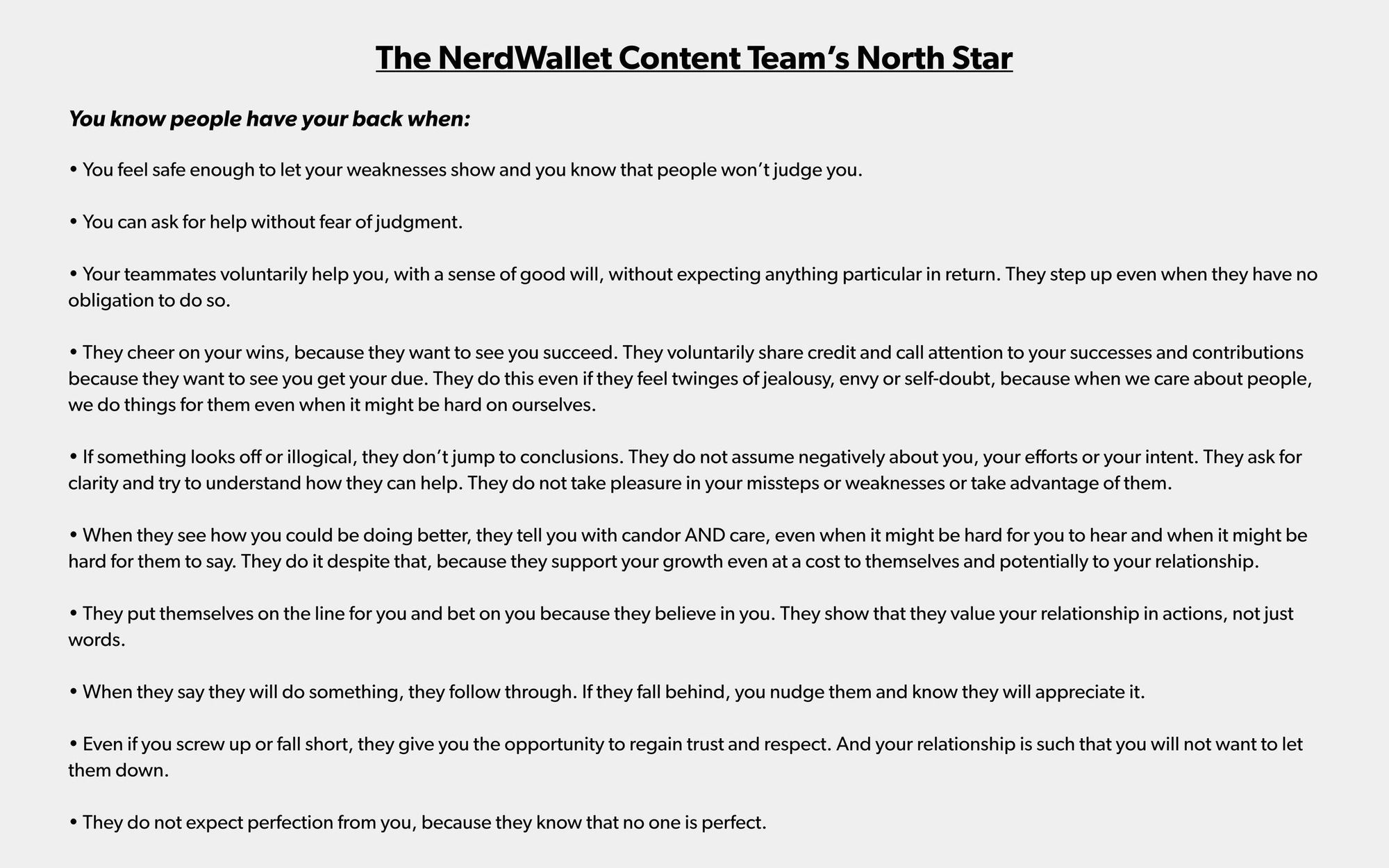
24. Weather your team’s emotional ups and downs.
Liz Fosslien is one of our favorites here on the Review for her ability to put a finer point on the messy emotions we all bring with us to the office (and, of course, her witty cartoons that have assembled a rabid following on social media). As we look to likely another year with remote work as the default, Humu’s Head of Content is taking these management tips with her into 2021:
- Give people an (opt) out. “More than at any other point in time, one size absolutely does not fit all. Some are craving interaction, others aren’t or aren’t able to fit it into their hectic days. Give people the benefit of the doubt if they’re not showing up to virtual events — and make sure they know they have it. You don’t want to add social pressure or worries about how they’re being perceived to their list of stressors. Call this out explicitly in your team meetings, letting them know it’s perfectly fine for anyone to opt out and they can always talk to you 1:1 if they’re struggling.”
- Add some official time off. As you look back on the past year, most of your (and your team’s) allotted vacation days are likely untouched. But even if you’re not able to jet off to a tropical locale, creating space for folks to decompress is critical for long-term team health. “Giving people a day off doesn’t matter in the long run — and it can go so far,” she says.
- Spot check for unstructured time. Check in to make sure your direct reports’ calendars aren’t getting too full. “Non-meeting blocks are essential. We have so many breaks built into our regular workdays in the office, from getting coffee and grabbing lunch to commuting,” says Fosslien. “Model good behavior by proactively putting chunks of time on your own calendar and encourage your direct reports to do the same.”

25. Adjust your sails — plan for uncertainty and lead through a crisis with this five-step process.
In April of last year, we hit publish on one of our biggest efforts to date — a detailed resource that tapped First Round partners, recession-era founders and our community of CEOs to create the most comprehensive guide available about what it would take to lead a startup during 2020’s economic crisis. We drew on original interviews, previously-unpublished First Round Community guides and founder surveys to crowdsource advice on everything from extending runway and reducing burn, to supporting teams and finding the bright spots.
Much of this, of course, was tailored to a unique moment in time — early April 2020, when the dust had yet to settle, theories abounded, and the path forward for the economy and the startup ecosystem was unclear. (For example, we certainly didn’t anticipate that nearly nine months later, lockdown orders would still be in effect and startups would still be operating remotely.) So while some sections may not be as relevant to the current moment, consider this resource a manual to return to in the face of future crises — or a collection of lessons to look back on as you chart your company’s course for 2021.
As we revisited this resource ourselves, one key theme stood out: Planning for uncertainty is a skill that founders need to continually sharpen. “As a leader, your job is to imagine how your company needs to be different. What are the different future scenarios for the country, for the economy and for your company? And how does your company both survive and thrive in that time?” says First Round’s Josh Kopelman.
Doing nothing is a decision. It’s the same as actively choosing to stay on the same path. And most founders don't realize that. If the winds are changing, a smart sailor will adjust their sails.
Here’s the framework we recommend: When a crisis looms (or as you revisit your quarterly and annual plans), convert observations and assumptions into possible scenarios. Then, outline current operating plan adjustments that would enable you to respond to those scenarios. Below, you’ll find a recap of our five-step framework for putting this into practice. To try it out for yourself, duplicate our Scenario Response Planner template. (This Notion doc includes an example response for a fictional corporate catering service.)
- Step 1: Identify the 6-10 key uncertainties. Focus on what you think will have the most profound impact on your company's prospects and strategies. Include a range, from macroeconomic uncertainties to those concerning your market, customers and other stakeholders.
- Step 2: Bucket them into scenarios. Create three (or more) scenarios: a best case, a worst case, and one that splits the difference. Give each a name and narrative, so they feel less abstract and more tailored to your company’s specific situation.
- Step 3: Craft responses to each. If your scenarios describe where the world might be heading, your responses answer the question, “Now what?” Use something like the table below to think through how your overall business game plan will change scenario-by-scenario.
- Step 4: Look for trigger points. Monitor for concrete internal and macro triggers that will help you decide which path to choose. Here are some sample indicators to consider: Changes to public health policies, job loss trends, small business closure rate, customer churn stabilizing or dropping, pick up (or drought) in inbound sales leads, and so on.
- Step 5: Revisit, revise, repeat. At a certain cadence (depending on the urgency of the crisis you’re facing) archive your old uncertainties, scenarios and responses and copy/paste the builder template into a fresh version to update your thinking.
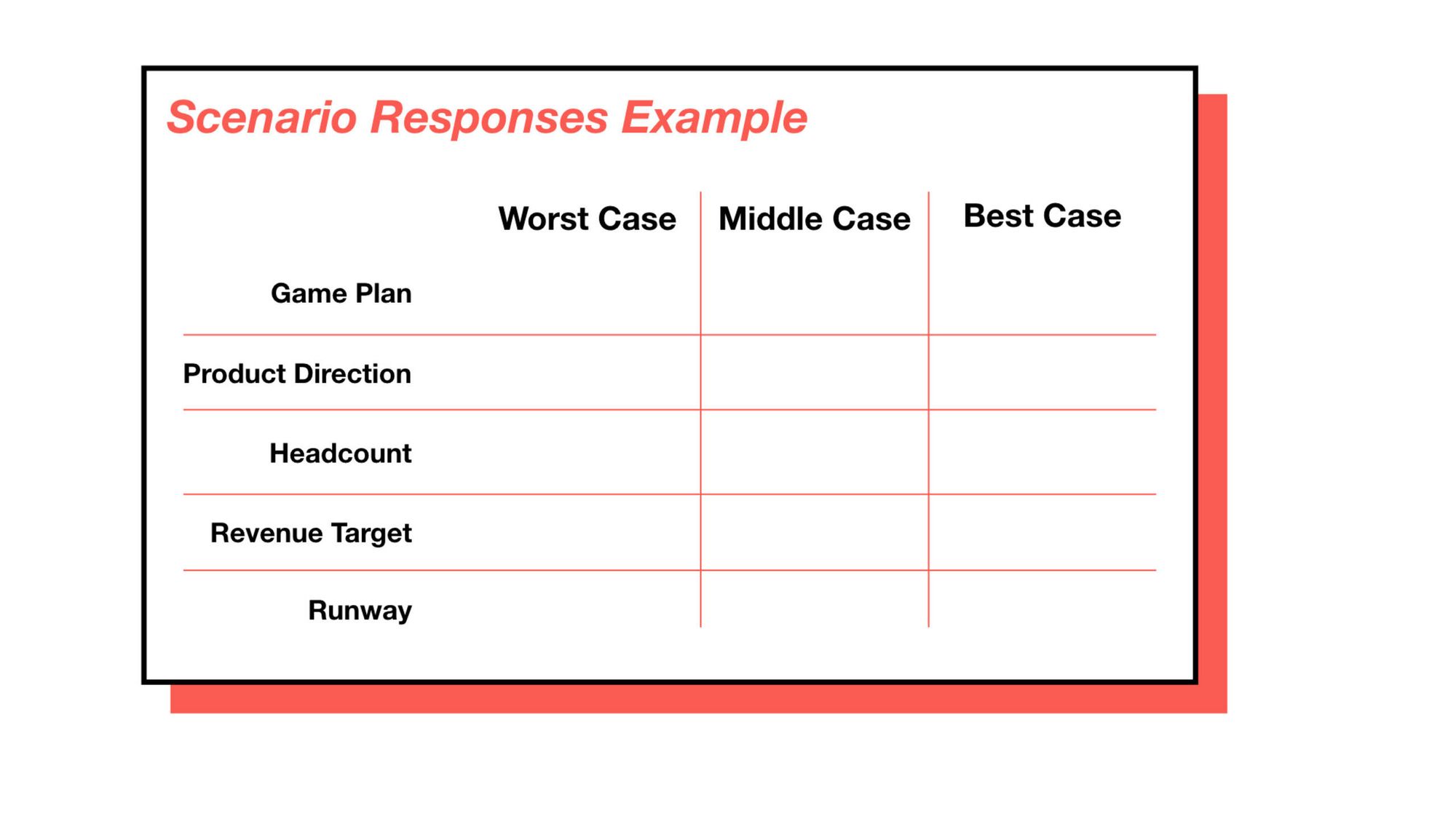
26. Accept when you’re at 80% to avoid hitting 0%.
Matt Wallaert (who most recently served as the Chief Behavioral Scientist at Clover Health) has worked as a behavioral scientist for over 15 years. So when it comes to prescribing tips for managing stress, he naturally turns to science. “In one particular study, people were forced to carry around a box of chocolate for a few days, then measure how much chocolate they ate. In one condition, we gave them no instructions for how to deal with cravings. In another, we taught them control-based techniques to avoid the chocolate, such as distraction — if you find yourself thinking about it, clear your mind of those thoughts and focus on something else. In a third, we taught them acceptance-based techniques, like experiential acceptance — recognize and validate the cravings, but don’t act on them,” he says.
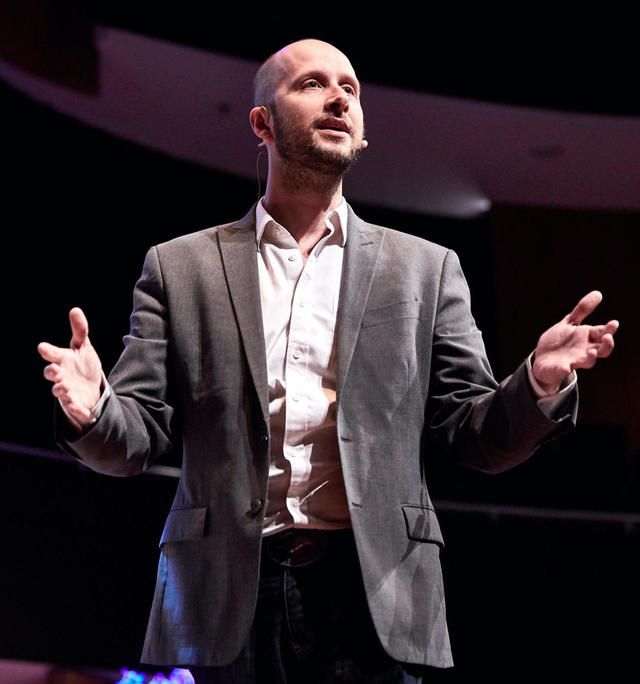
The findings? “Both distraction and acceptance are effective at helping people resist the chocolate, when compared with doing nothing at all,” says Wallaert.
So what does nibbling on chocolate have to do with leading a company? “Acceptance helps us eat one chocolate and not the whole bag, because it acknowledges our feelings and gives them an outlet. And the difference between one chocolate and the whole bag matters; serious setbacks are still different than catastrophes, now more than ever,” he says. “This is an area where magnitude does matter. Taking a few hours off to cope is different than checking out for weeks at a time. Letting one deal slip isn't the same as abandoning your entire pipeline.”
Accepting that we’re not at 100% gives us the ability to continue at 80% instead of crashing to 0%.
27. Build an outcome-obsessed product org.
Tyler Hogge, SVP of Product and Risk at Divvy, has seen plenty of folks in product circles claim that PMs are the CEOs of their product, but without the internal infrastructure to back it up. “The product world has let ‘PMs are CEOs’ become something of a rallying cry, without actually weaving that ethos into their everyday operations. PMs aren’t usually empowered to act that way. If your PMs aren’t responsible for hitting revenue goals and their own P&L, calling them the product’s CEO is nothing more than a bumper-sticker slogan,” says Hogge. “At Divvy, our PMs sell — that’s really the key to the whole system.”
Delivering on milestones should be table-stakes for PMs at any company. The real question PMs should be focused on is: Does this software create the outcomes you wanted for the business while also delighting customers?
When it comes to hiring outcome-driven PMs, here’s a trio of questions and follow-ups Hogge keeps in his back pocket:
- Question: What achievements or outcomes are you most proud of as a product manager? “This identifies whether they are outcome-driven. If they just talk about shipping stuff without any clear measurable outcome, they’re not of the mindset that we need.”
- Follow-up: What did that achievement result in? “Some PMs can take that next step and say, ‘Well, it resulted in X amount of revenue.’ That’s better than some answers, but then you’ve got to go even a level deeper.”
- Additional follow-up: How did that result compare to what you said it would do? “This is where most PMs struggle, because they often don’t define clear and measurable outcomes up front, so then they’re not sure how it compares to what was expected. A great answer here might be, ‘We wanted to get to 50% adoption by the end of the year, and we actually got to 65%.’ There’s clear context for success and what was achieved.”
“If you have to keep pushing a candidate to think about the business results beyond sticking to a timeline of deliverables, then they will likely struggle to meet the needs of the type of product manager you’re looking for,” says Hogge.
28. Make your offsites count.
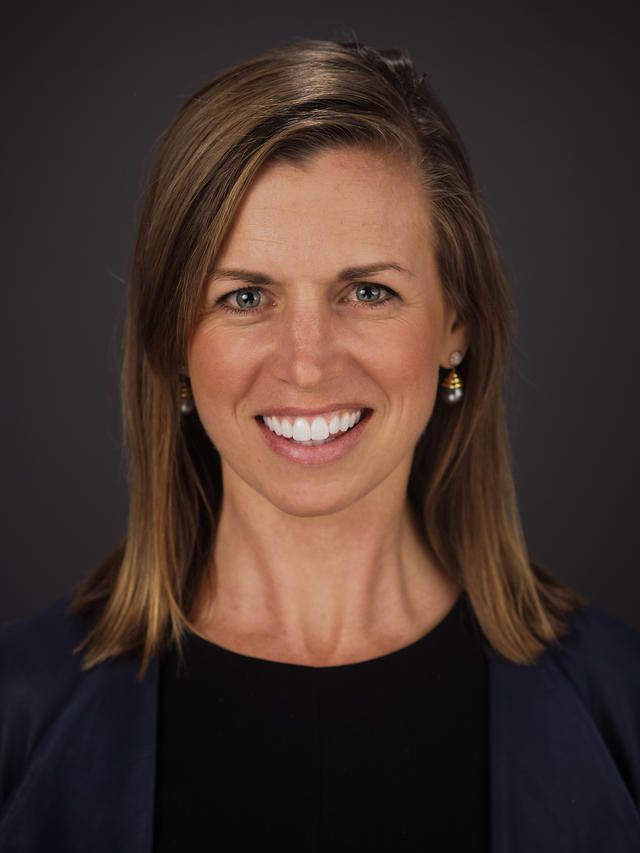
Offsites and team retreats often sit at one of two extremes: focused on strategy at the expense of relationships, or filled with forced-bordering-on-cheesy bonding activities. The same holds true for virtual offsites, plus the added downsides of marathon-all day Zoom sessions where everyone’s glued to their monitor.
In creating her team’s first virtual offsite, Sitka CEO Kelsey Mellard teamed up with experience designer Mike Wang to re-architect the entire offsite from the ground-up. They’ve got plenty of tips for making sure your next offsite is purposeful and impactful — rather than just another box to tick on your annual checklist.
To start, Wang cautions against getting right down to the brass tacks of which session will go where. “Run through a framework of laying out your objectives and outcomes, design principles and program theme before you even start delving into the details of pulling together the actual schedule,” he says.
While this may seem like a big upfront, process-heavy investment, it’s one worth making. “It’s the difference between, ‘We want this to come across and this is how we’re going to achieve it,’ versus ‘Let’s do a panel here.’ Offsites and retreats often end up letting content take the reins and drive the agenda,” says Wang.
If your offsite consists of several days of teams just presenting slide decks with a few breaks peppered in between, something’s failed along the way.
“While most of us tend to focus on the content of a retreat, it’s critical to concurrently define your approach — the design principles. These will inform the decision-making process of how you structure the experience, setting up guardrails for what you might say no to, tradeoffs you might make, and priorities to stick to,” he says.
Check out the full list of Sitka’s offsite design principles below:
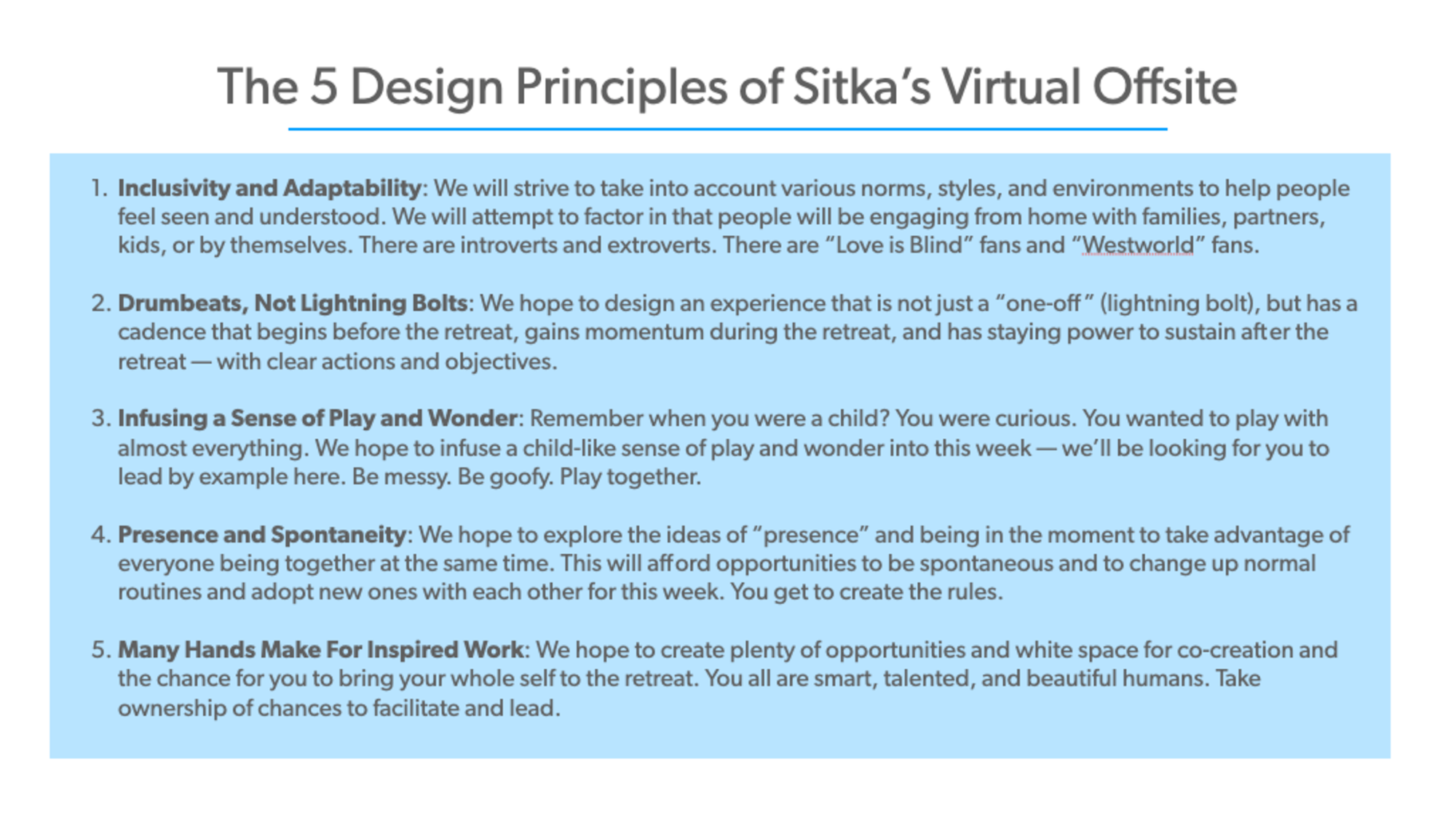
29. Look to Walt Disney for putting together a harmonious leadership team.
Last year, we sat down for an interview with Alison Rand, Senior Director of Design Operations for InVision, to pick her brain about a role that more companies at every stage of the growth journey are paying attention to: design operations. She had plenty of spot-on advice for startups curious about this up-and-coming discipline — and whether it could move the needle within their orgs. But one particular nugget stood out to us, and folks beyond the bounds of design should jot it down.

“Joining a company as the first hire in any discipline is super overwhelming. It’s like being given the final destination where you want to go — without any directions or vehicle to get you there,” When it comes to painting a masterpiece on a blank canvas, Rand’s found comfort and clarity in Walt Disney’s triumvirate model of creative leadership: the Dreamer, the Realist and the Critic.
- The Dreamer presents a vision for the future as it could be, and pushes the boundaries beyond what others may see. They focus on the what.
- The Realist considers the dreamer’s vision within a logical planning style. They focus on the action plan and the how of the idea.
- The Critic probes the barriers of bringing the idea to life. They suss out the weak points and the logic behind the vision, and ultimately consider the why.
When it comes to your own leadership roster, consider how folks fall within these three pieces of the puzzle — and if you’re stacking one side too heavily while neglecting another.
30. Manage up, down and sideways with these tips.
We sent a call out to some of the sharpest folks in our First Round community for their best tips on managing up. While the aim was to provide a playbook for reports looking to manage up effectively, there’s plenty of wisdom to be had for company-builders that are constantly managing in all directions.
1. Align on these two key questions.
“Make sure you and your report have the same answers to these two key questions: 1) What is success for me personally? 2) What is success for the team?” says Julie Zhuo, Co-Founder of Inspirit.
The intersection of your success and your report’s success is where magic happens, and where opportunities for fulfilling impact lie.
2. Start leaving a breadcrumb trail.
When it comes to making a large ask, it can be tempting to hoard the details until you’ve crafted the perfect plan to present. That’s a mistake, says Ralph Loura, SVP CIO of Lumentum and former CTO of Rodan + Fields. “Don’t save up a big topic until you feel you have all the answers — anything worthwhile takes time to build. An old manager of mine had a ‘rule of seven dippings,’ which essentially means that anything sufficiently complex or abstract takes multiple exposures (in his case, seven) in order for someone to internalize the concept,” he says.
3. Create a shared understanding of the problem.
“Managing up is about building a relationship with a report and manager where the two are partners in problem solving,” says Betty Liao, Senior Director of Product Management at InVision. Before tackling a thorny problem, align on these questions with your report:
- What information do you have that your report doesn’t yet know?
- What are the constraints you’re operating under?
- What are your current unknowns? How are you planning to get more clarity?
Next, consider the possible strategies together:
- What constraints do you believe should be challenged?
- What alternative paths have you considered? What are the tradeoffs?
- How can the manager best support the report?
